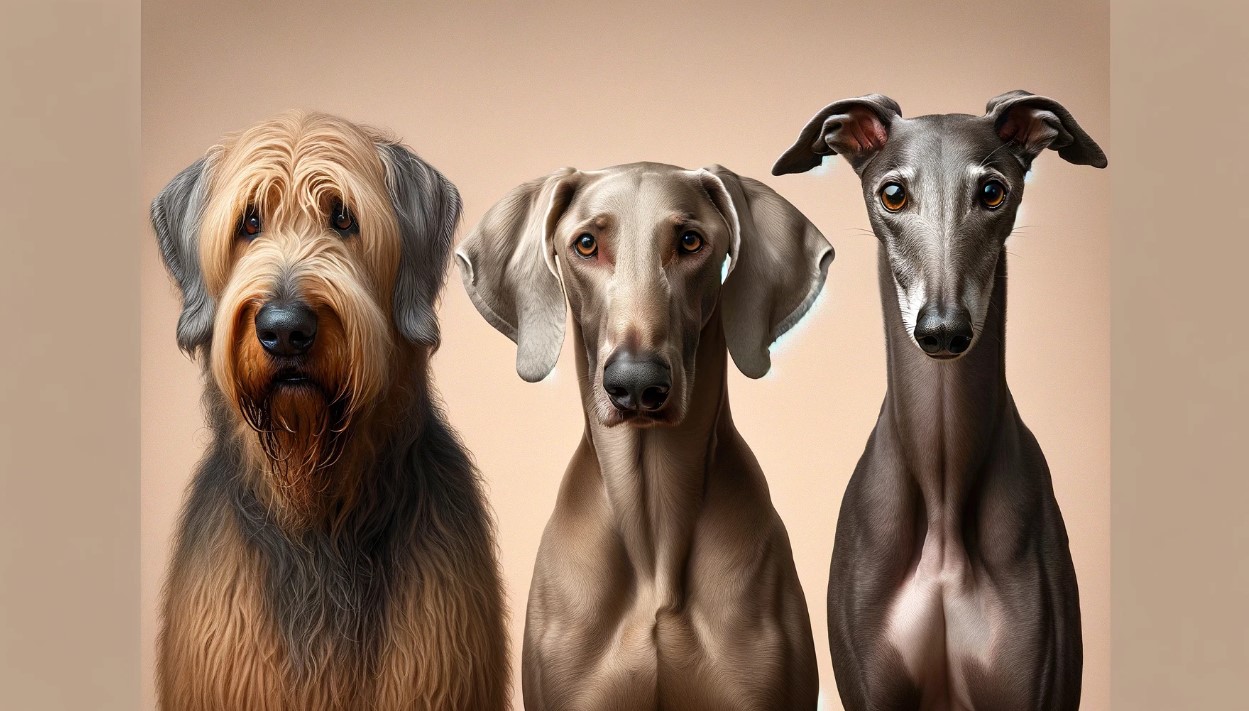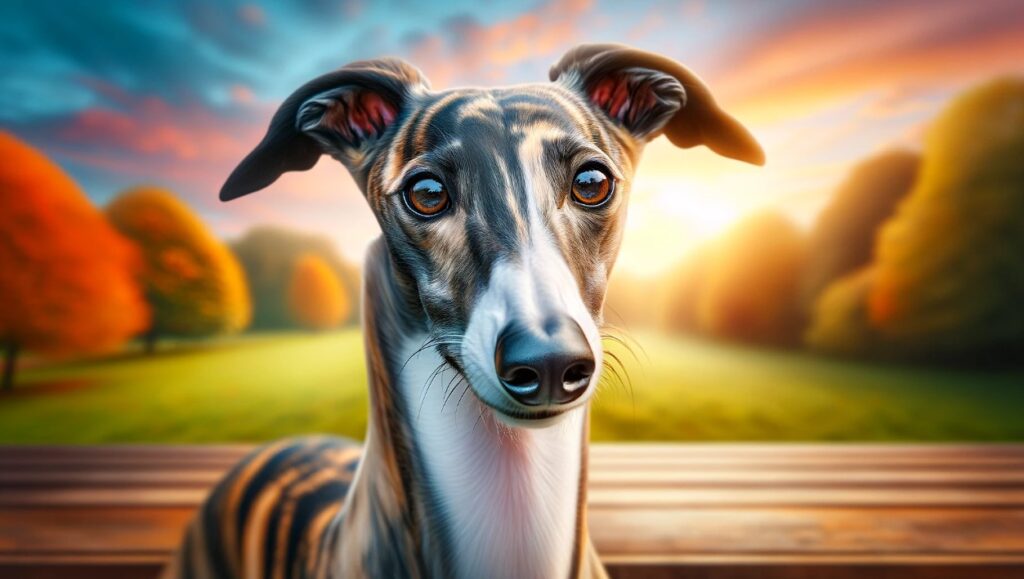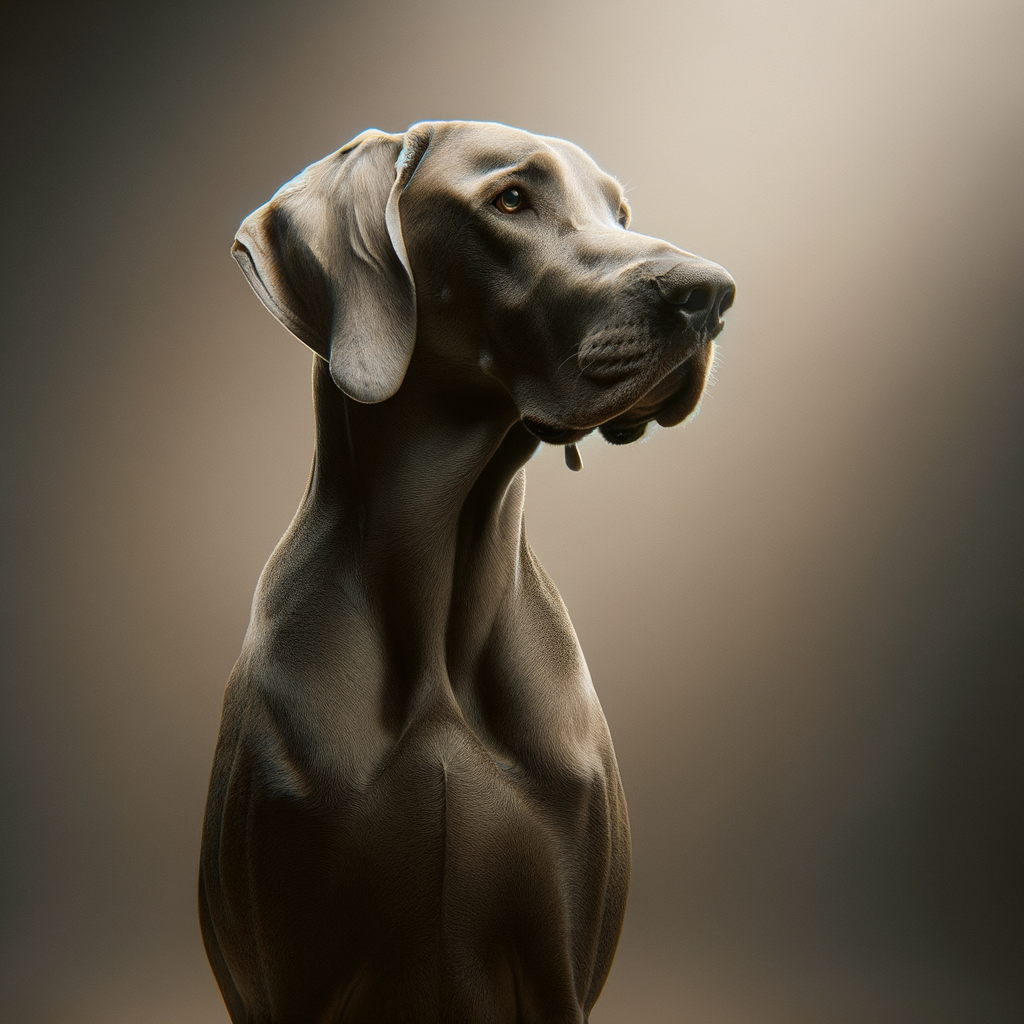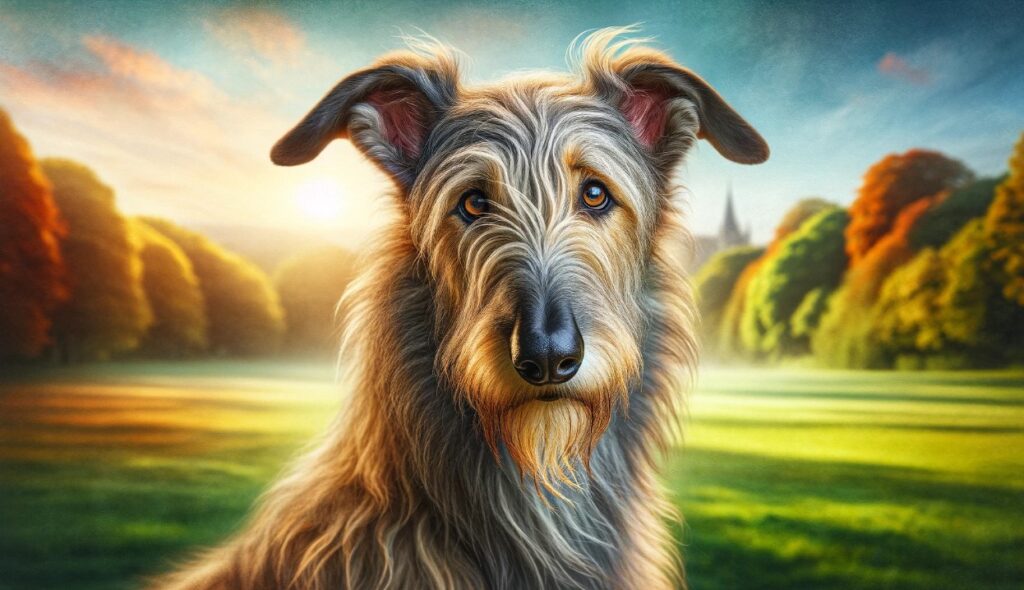Welcome, fellow dog lovers! Isn’t it fascinating how our adorable canine friends come in a myriad of colors? Today, we will dive into grey dog breeds. It’s more than just a color; it’s a testament to the beauty and diversity that exists within canine genetics. You see, the gene responsible for the grey coat in dogs is a bit of an enigma, a delightful quirk of nature that results in these stunningly beautiful grey breeds.

These grey dog breeds have a certain allure that’s hard to resist. Their unique coloration often conveys a sense of elegance, making them standouts in the canine crowd. But beyond their good looks, grey dog breeds often possess distinctive personality traits, health profiles, and life spans. In fact, their personalities are as diverse as the shades of grey they sport!
As a practicing vet, I’ve had the privilege of meeting a diverse array of dogs, and let me tell you, each grey dog breed has something special to offer. From the sprightly Greyhound to the majestic Neapolitan Mastiff, each breed possesses its own fascinating history, distinct temperament, and specific care needs.
For instance, the striking Weimaraner, with its silvery-grey coat, is known for its unwavering loyalty and intelligence. Meanwhile, the robust Neapolitan Mastiff, a breed steeped in history, impresses with its commanding presence and protective instincts. These are just two examples of the diverse and delightful breeds we’ll get to explore today.
So, let’s embark on this exciting journey together, exploring the world of grey dog breeds. By the end of it, you might just find yourself falling in love with these shades of grey in our canine companions. You’ll learn about their unique characteristics, health considerations, and care requirements, equipping you with the knowledge to provide the best life possible for these four-legged beauties. So, buckle up, because it’s going to be a fun, grey-tinted ride!
Grey Dog Breeds: Shades of Grey in the Canine World
Get ready to embark on a canine journey of a different shade! If you have a soft spot for grey-coated dogs, you’re on the right page! In this section, we’re going to explore some of the most popular grey dog breeds, their unique characteristics, and important health considerations.
Popular Grey Dog Breeds
The Greyhound
Often referred to as the cheetahs of the dog world, Greyhounds are sleek, fast, and yes, predominantly grey. They are known for their loving nature and gentle demeanor. Despite their racing heritage, these dogs are quite laid-back and enjoy lounging around. On the health front, greyhounds are generally healthy but can be prone to some conditions like bloat and hip dysplasia. Their lifespan typically ranges from 10 to 14 years.
The Weimaraner
Also known as “the grey ghost,” the Weimaraner is a unique breed with a silver-grey coat. These dogs are energetic, intelligent, and great with families. They enjoy being active and require a fair amount of exercise. Some common health issues include hip dysplasia and gastric torsion. A well-cared-for Weimaraner can live between 11 to 14 years.
The Neapolitan Mastiff
This majestic breed is known for its large size and distinctive grey (or blue) coat. Neapolitan Mastiffs are protective and affectionate with their families. They do have a higher risk of developing certain health problems, such as hip dysplasia and heart issues. With a life expectancy of 7 to 9 years, they have a relatively shorter lifespan than most other breeds.
The Scottish Deerhound
Often compared to a rough-coated Greyhound, the Scottish Deerhound is a noble breed with a wiry, grey coat. They are friendly, dignified, and gentle dogs. They do, however, have some breed-specific health concerns, including heart problems and bloat. On average, Scottish Deerhounds live for about 8 to 11 years.
The Irish Wolfhound
One of the tallest breeds in the dog world, the Irish Wolfhound often sports a grey coat. They are known for their calm, gentle nature. Health-wise, they are prone to heart disease and bone cancer. Their lifespan is unfortunately brief, with most living 6 to 8 years.
The Poodle
Poodles come in many shades, including grey. They’re highly intelligent, easy to train, and friendly. While they are generally healthy dogs, they can be susceptible to hip dysplasia and certain eye conditions. Depending on their size (Standard, Miniature, or Toy), Poodles can live anywhere from 10 to 18 years.
Grey dog breeds are not just beautiful to behold; they also come packed with unique characteristics and traits. Whether you’re attracted to the athletic Greyhound or the noble Scottish Deerhound, each breed offers an exciting blend of personality and charm. Whichever breed you choose, remember that health considerations are key to ensuring a happy, fulfilling life for your grey-coated canine friend.
The Greyhound: A Classic Grey Dog Breed
History and Origin of the Greyhound
Greyhounds, one of the most well-known grey dog breeds, have a captivating history that spans centuries. This breed, often associated with swift speed and agility, is thought to have originated in ancient Egypt. There are depictions of Greyhound-like dogs in art dating back as far as 4000 B.C., suggesting the antiquity of this breed.
The name “Greyhound” doesn’t actually refer to their color, but is believed to be derived from the term “gazehound,” due to the breed’s keen ability to spot movement in the distance. Over the centuries, Greyhounds have been treasured for their hunting prowess, incredible speed, and gentle demeanor. These dogs were introduced to Europe during the Dark Ages and later brought to America by Spanish explorers in the 1500s.
Temperament and Personality of the Greyhound
Despite their reputation on the race track, Greyhounds are often referred to as “45-mile-per-hour couch potatoes.” This is because they are surprisingly calm and relaxed when they aren’t sprinting after something. They’re known to enjoy a good nap on a comfortable couch, displaying a somewhat lazy nature when they’re not showing off their athletic prowess.
Greyhounds are generally friendly and sociable animals. They are typically good with children and can get along well with other dogs, especially if they’re introduced at a young age. They’re intelligent, affectionate, and their docile nature often makes them an excellent choice for families.
One thing to note about Greyhounds is their strong prey drive. Because they were bred for hunting, they have an instinct to chase after smaller animals. This means if you have other small pets at home or frequent areas with lots of squirrels or rabbits, you’ll need to keep a close eye on your Greyhound.
Greyhounds are also known to be quite sensitive, both physically and emotionally. Physically, they have very little body fat and thin skin, which means they can get cold easily and are more prone to injuries. Emotionally, they can be sensitive to stress and don’t respond well to harsh training methods. They thrive in a calm, loving environment and respond best to positive reinforcement.
In terms of care, Greyhounds are relatively low maintenance. They don’t require much grooming thanks to their short, thin coat and they don’t have a strong doggy odor. They do, however, require regular exercise to stay healthy and happy. But don’t be fooled, a quick sprint in the yard or a short walk around the block is often enough to tire them out.
Grey dog breeds like the Greyhound offer a unique blend of athletic ability and relaxed, gentle temperament. If you’re looking for a loyal, affectionate pet that loves both active playtime and quiet relaxation, the Greyhound could be the perfect choice.

The Weimaraner: A Unique Grey Dog Breed
The Weimaraner, often referred to as the “Grey Ghost,” is an iconic grey dog breed known for its sleek silver-grey coat, striking blue or amber eyes, and an air of regal elegance. This breed is not only remarkable for its beauty but also for its rich history, vivacious temperament, and impressive athleticism.
Understanding the Weimaraner Breed
Originating from Germany, the Weimaraner was initially bred for hunting large game such as deer and bears. Over time, these dogs shifted to more manageable game like fowl, rabbits, and foxes. Their keen sense of smell, speed, and agility made them excellent hunting companions.
Weimaraners are medium to large-sized dogs, with males typically weighing between 70 and 85 pounds, and females between 55 and 70 pounds. Their muscular, athletic bodies enable them to be versatile in various dog sports such as agility, tracking, and obedience competitions.
One of the key characteristics of Weimaraners is their intelligence. They are quick learners and are known to be problem solvers. However, this intelligence can sometimes lead to stubbornness if not directed properly. Therefore, early training and socialization are vital for this breed.
Their temperament is often described as energetic, playful, and affectionate. They form strong bonds with their families and can be excellent companions for children. However, due to their high energy levels, they may not be suitable for households with very young kids unless properly trained.
Care and Maintenance for a Weimaraner
Caring for a Weimaraner requires attention to their physical and mental needs. They are a high-energy breed that requires regular exercise to keep them happy and healthy. Daily walks, play sessions, and regular access to a safe, enclosed area where they can run are recommended.
Their short, sleek coat is relatively low maintenance, but it does shed. Regular brushing can help to minimize shedding and keep their coat looking its best. Bathing should be done as needed, and regular checks on their ears, teeth, and nails are important for their overall health.
Weimaraners are prone to some health conditions, such as hip dysplasia, gastric dilatation-volvulus (GDV), and hypothyroidism. Regular vet check-ups can help catch any potential issues early.
Training a Weimaraner can be both a joy and a challenge. Their intelligence and eagerness to please make them quick learners, but their independent streak may require a bit of patience. Positive reinforcement methods work best with this breed.
In conclusion, owning a Weimaraner is a commitment to providing ample exercise, mental stimulation, and a lot of love. But for those who are up to the task, the reward is an incredibly loyal, intelligent, and affectionate companion who will add a touch of elegant gray to your life.

The Neapolitan Mastiff: A Majestic Grey Dog Breed
When we talk about majestic grey dog breeds, the Neapolitan Mastiff surely deserves a mention. This breed is known for its impressive size, distinct wrinkles, and a coat that often comes in beautiful shades of grey. But there’s more to this breed than just its looks. Let’s delve into the characteristics of the Neapolitan Mastiff and understand what makes this breed so special.
Characteristics of the Neapolitan Mastiff
The Neapolitan Mastiff, also known as the Mastino Napoletano, is a breed that originated in Italy. This breed is a true giant, with males standing at 26 to 31 inches tall and weighing up to 150 pounds, while females are slightly smaller. The coat of a Neapolitan Mastiff is dense and short, and it can come in various shades of grey, from light silver to deep blue.
One of the most distinctive features of this breed is its loose, wrinkled skin, especially around the face and neck. This, combined with their large, drooping jowls, gives them a somewhat melancholic but endearing expression. Their eyes are deep-set and usually dark, adding to their mysterious charm.
Neapolitan Mastiffs are known for their calm and gentle nature. Despite their imposing size, they are incredibly affectionate and protective of their families. They are generally good with children and can get along well with other pets if properly socialized.
However, it’s important to note that this breed is not for everyone. They require a confident and experienced owner who can handle their size and strength. They are also prone to certain health issues, such as hip dysplasia, heart conditions, and skin infections, so regular veterinary check-ups are a must.
Training and Socialization for Neapolitan Mastiffs
Training a Neapolitan Mastiff can be a bit of a challenge due to their independent and stubborn nature. However, with patience, consistency, and positive reinforcement, they can be trained effectively. Early socialization is crucial for this breed. Exposing them to different people, environments, and situations from a young age can help them grow into well-rounded dogs.
Despite their protective instincts, Neapolitan Mastiffs are generally not aggressive. However, due to their size and strength, they can accidentally knock over small children or elderly people. Therefore, it’s essential to supervise their interactions with family members and guests.
When it comes to exercise, this breed does not require much. A few short walks and some playtime in a secure yard are usually enough to keep them happy and healthy. However, they are prone to obesity, so it’s important to monitor their diet and ensure they get enough exercise.
In conclusion, the Neapolitan Mastiff is a unique grey dog breed that’s full of personality. They might not be the easiest breed to handle, but with the right owner, they can make a loyal and loving companion.
The Scottish Deerhound: A Noble Grey Dog Breed
Often referred to as the ‘Royal Dog of Scotland’, the Scottish Deerhound is a magnificent breed that easily stands out among the grey dog breeds. Their stature and unique coat are some of the reasons why they are sought after by dog enthusiasts around the world.
Overview of the Scottish Deerhound Breed
Originating from Scotland, as the name suggests, the Scottish Deerhound is a large breed known for its athletic prowess. Historically, these dogs were bred for red deer hunting, thanks to their speed, strength, and endurance. Sporting a wiry and rough coat that is typically grey, they carry a regal yet gentle presence. Their height can reach up to 32 inches at the shoulders, and they can weigh anywhere between 85 to 110 pounds.
Beyond their magnificent appearance, Scottish Deerhounds are gentle, friendly, and very attached to their families. They are known for their dignified demeanor and are often described as calm and relaxed dogs. However, they are also known for their playful streak, especially when they are young. Their hunting instincts still linger, which means they enjoy a good chase and need a safe and enclosed outdoor space to sprint.
Health and Exercise Needs of Scottish Deerhounds
When it comes to their health, Scottish Deerhounds, like many large dog breeds, have a shorter lifespan, typically around 8-11 years. They are prone to specific health conditions such as cardiomyopathy, osteosarcoma, and gastric torsion. Regular check-ups and early detection are crucial to ensure your Deerhound leads a healthy life.
In terms of their exercise needs, despite their relaxed demeanor, Scottish Deerhounds need regular physical stimulation. Remember, these are sighthounds that were bred to chase game over vast distances. Therefore, daily long walks and opportunities for them to sprint in a secure area are essential. However, their exercise needs decrease as they grow older, and they are quite content with being couch potatoes indoors.
In terms of their diet, it is essential to provide them balanced meals to maintain their health. Being a large breed, they need a diet rich in protein to support their muscles and a moderate amount of carbohydrates for energy. Keep a close eye on their weight, as obesity can lead to various health problems.
In summary, if you’re considering adopting a Scottish Deerhound, you’ll be welcoming a gentle, loyal, and playful companion into your home. However, remember they require ample space to move about and a fair amount of daily physical activity. With the right care and attention, this noble greyhound can make an enchanting addition to your family!

The Irish Wolfhound: A Large Grey Dog Breed
If you’re a dog lover who appreciates the grandeur and nobility of large dog breeds, chances are, you’re already familiar with the Irish Wolfhound. This breed, which is one of the tallest in the world, is also among the most distinctive grey dog breeds available. Here, we’ll delve into the unique set of characteristics that define the Irish Wolfhound and discuss how to provide the best care for this gentle giant.
Description and Traits of the Irish Wolfhound
The Irish Wolfhound is a breed that commands attention not just due to its size but also because of its regal bearing and grey coat. These dogs can reach an impressive height of up to 34 inches at the shoulder and weigh between 105 to 120 pounds. Their grey coat, which can range from light silver to a deep charcoal color, adds to their majestic appearance.
Irish Wolfhounds have a rough, wiry coat that requires regular grooming to keep it healthy and free of mats. Their wolf-like facial features are accentuated by a rough beard and eyebrows, giving them a wise and distinguished appearance.
Despite their imposing size, it’s worth noting that Irish Wolfhounds are known for their sweet-natured and gentle disposition. They are incredibly patient and get along well with children, making them great family pets. However, due to their hunting history, they can exhibit a strong prey drive, so it’s crucial to socialize them early on.
Caring for an Irish Wolfhound
When it comes to caring for an Irish Wolfhound, keep in mind that their considerable size does call for specific requirements. For example, they need a larger living space to move around comfortably. However, despite their size, they are relatively inactive indoors and are quite comfortable living in apartments as long as they get their regular exercise.
- Exercise: Irish Wolfhounds are not overly energetic dogs, but they still need a good amount of daily exercise to maintain their health and happiness. A couple of decent walks or a brief run in an enclosed area is usually sufficient.
- Diet: As a large breed, the Irish Wolfhound requires a quality, high-protein diet to support its mass and energy needs. Feeding them a balanced diet specially formulated for large breeds can help prevent health issues associated with rapid growth.
- Grooming: Their wiry coat requires regular brushing to prevent matting and keep the skin healthy. An occasional bath will keep them clean, and regular checks of their ears, teeth, and nails are essential for their overall well-being.
- Health care: Irish Wolfhounds generally have a shorter lifespan, typically between 6 to 8 years, and are prone to certain health issues like hip dysplasia and heart disease. Regular vet check-ups and preventative measures can help prolong their lifespan.
In summary, the Irish Wolfhound is truly a unique grey dog breed that combines majestic size with a gentle spirit. With proper care, they can make a wonderful addition to any family that appreciates the grace and grandeur of this fantastic breed.
The Poodle: A Versatile Grey Dog Breed
If we talk about the most versatile among all the grey dog breeds, we can’t ignore the Poodle. Known for their curly and dense coat that comes in a variety of colours, including grey, Poodles are highly admired for their intelligence and elegance. Let’s delve deeper into understanding this fascinating breed.
Understanding the Different Types of Poodles
Poodles come in three types: Standard, Miniature, and Toy. The Standard Poodle is the largest and the most athletic of the three varieties, usually standing at 15 inches or taller. Miniature Poodles, on the other hand, are somewhere in between, standing at 10 to 15 inches at the shoulder. Toy Poodles, as the name suggests, are the smallest, standing at 10 inches or less.
All three types have similar physical characteristics, including a square build, long and floppy ears, and that characteristic curly or corded coat. In terms of temperament, Poodles are known for their intelligence, trainability, and friendly nature.
It’s also worth noting that Poodles are non-shedding breed, making them a good choice for those who suffer from allergies. However, this doesn’t mean that they are a low-maintenance breed. Their unique coat requires frequent grooming to keep it in the best condition.
Grooming and Health Care for Poodles
Regardless of the type, all Poodles require regular grooming due to their dense, curly coat. Regular brushing is necessary to prevent matting and tangling. Professional grooming may also be required every 4 to 6 weeks to trim the coat and keep it looking its best.
As for health care, Poodles are generally healthy, but like all breeds, they’re susceptible to certain health conditions. Not all Poodles will get any or all of these conditions, but it’s important to be aware of them if you’re considering this breed. Some common health issues in Poodles include hip dysplasia, progressive retinal atrophy, and epilepsy.
Regular vet check-ups and a balanced diet can go a long way in ensuring your Poodle lives a healthy and long life. Also, considering their intelligence and energetic nature, Poodles require regular mental and physical stimulation. This could include activities such as fetch, agility training, or even dog puzzles.
As a dog parent, you want to provide the best life for your furry friend. Choosing a Poodle means preparing yourself for a journey filled with lots of love, fun, and some serious grooming sessions. But don’t worry, every minute spent with this breed is totally worth it. After all, a Poodle is not just a pet, but a true family member.
So, whether you already have a Poodle or planning to get one, remember that these grey dog breeds will fill your life with shades of joy and companionship like no other. Here’s to the beautiful, intelligent, and versatile Poodles!
Frequently Asked Questions
Q1: What are some common grey dog breeds?
A: Some common grey dog breeds include the Weimaraner, Neapolitan Mastiff, Irish Wolfhound, and the Scottish Deerhound.
Q2: Do grey dogs have any specific health issues related to their coat color?
A: No, the color of a dog’s coat does not directly affect their health. However, certain breeds, regardless of color, may be predisposed to specific health conditions.
Q3: Does the color of a dog’s coat change as they age?
A: Yes, just like humans, dogs can also experience changes in their coat color as they age. This is especially noticeable in dogs with dark coats, as they may start to show grey or white hairs.
Q4: Are grey dogs rare?
A: Grey dogs are not necessarily rare, but certain breeds that come in grey are less common than others. For example, the Weimaraner is a well-known grey breed, but it’s not as common as other breeds like the Labrador Retriever or the German Shepherd.
Q5: Do grey dogs require special grooming?
A: Grey dogs do not require any special grooming based on their color. However, the grooming needs can vary greatly depending on the breed and the type of coat they have.
Dr. Candy, a holistic veterinarian and certified raw dog food nutrition specialist, graduated from Oklahoma State University in 2009 with a DVM and has since specialized in companion animal nutrition, advocating for species-specific diets. With a background in wildlife rehabilitation and oil spill response, she combines holistic health and conventional medicine in her unique approach to treating chronic diseases, allergies, and autoimmune conditions in pets. As the owner of a veterinary practice in Colorado and an author, Dr. Candy is dedicated to educating pet parents and improving the health and happiness of animals.




